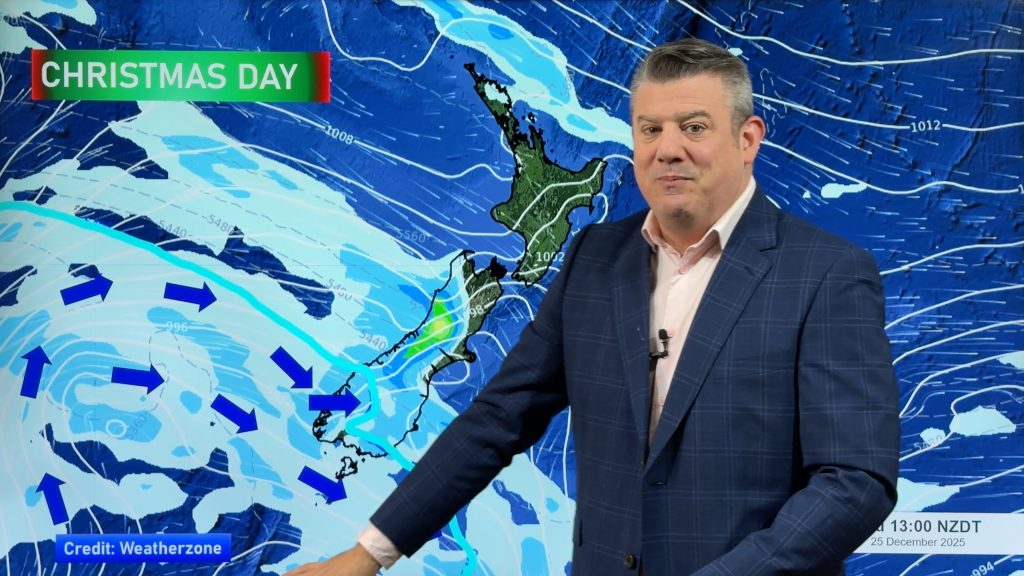
> From the WeatherWatch archives
New Zealand is looking back on a cold November. It was dry and sunny for most areas, but it was also a bit chilly thanks to frequent southerlies. The higher than average rate of southerlies was due to a higher than normal pressures over the central and southern Tasman Sea, and lower than normal pressures east of the Chatham Islands.
According to NIWA, temperatures that were more than 1.2°C below the November average were observed in eastern areas of both Islands, as well as inland North Island areas from the Waikato extending southwards to Palmerston North. Temperatures were between 0.5°C and 1.2°C below the November average everywhere else.
It was the coldest November on record for Te Kuiti and Cape Campbell. The nation-wide average temperature in November 2012 was 12.8°C which is 0.9°C below the 1971-2000 November average, using NIWA’s seven-station temperature series which begins in 1909.
It was a very dry November for much of the North Island, as well as Nelson, Marlborough, Buller, and the West Coast of the South Island. Rainfall was also below normal for Fiordland and Southland.
It was the driest November on record for Te Puke and Rotorua. November rainfall was less than 50 percent of November normal in south Auckland, Waikato/Coromandel, Bay of Plenty, between Wanganui and Wellington, parts of the Wairarapa, Nelson, Marlborough, Buller, and on the West Coast northwards of Hokitika. Below normal November rainfall (between 50 and 79 percent of November normal) was generally observed elsewhere. The notable exceptions were Gisborne and northern Hawkes Bay (with double normal November rainfall), and south Canterbury and much of Otago (with above normal rainfall, between 120 and 149 percent of November normal).
As at December 1st, soils were unusually dry for the time of year across much of the North Island (except for Gisborne and northern Hawkes Bay, where soil moistures remain elevated after heavy rainfall on the 12th), as well as Nelson and Buller. In contrast, soils remain wetter than usual for the time of year across much of south Canterbury. Elsewhere, levels were closer to normal.
It was an extremely sunny November for the West Coast of the South Island, with sunshine totals between 125 percent and 150 percent of November normal. It was the sunniest November on record for Hokitika and Greymouth. It was also rather sunny across much of the North Island and Nelson/Marlborough. Sunshine totals were well above normal (exceeding 125 percent of November normal) for Nelson, around New Plymouth and Taumarunui, and the Central Plateau. For the eastern South Island and Auckland, sunshine totals were close to November normal. In contrast, below normal sunshine was experienced in Northland and the Wairarapa.
Further Highlights:
· The highest temperature was 30.1°C, observed at Blenheim on 25 November.
· The lowest temperature was -5.1°C, recorded at Waiouru on 7 November.
· The highest 1-day rainfall experienced was 137 mm at Milford Sound on 1 November.
· The highest gust recorded was 161 km/hr at Cape Turnagain, on 18 November.
· Of the six main centres in November 2012, Tauranga was the driest and sunniest, Dunedin the wettest and coolest, and Auckland the warmest but cloudiest.
Homepage image/ Christine Johnson
By Howard Joseph, WeatherWatch.co.nz and NIWA
Comments
Before you add a new comment, take note this story was published on 3 Dec 2012.




Add new comment
Ian Cooper on 4/12/2012 8:47pm
For some reason NIWA has missed noting that the total of 20.2mm is a new November low for Palmerston North at the Turitea Met Station near Massey University. The old record was 23mm in 1989. Records go back to June 1928.
Reply
Brendan Pratt on 3/12/2012 11:00pm
Very dry month here in Te Puke, with only 25.5mm of rain and only 8 days of which rain fell
In November 2011 we had 42.0mm of rain and 10 day in which rain fell.
Reply
WW Forecast Team on 3/12/2012 11:37pm
Thank you very much for posting!
Cheers
WW
Reply